Local News
Demolition complete of old Chesed Shel Emes house – new building expected to be completed in 2021
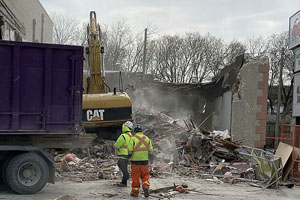
By BERNIE BELLAN
It was just over a little more than a year ago that the Chesed Shel Emes (the Winnipeg Jewish community’s burial society) launched a capital campaign, with the intent to build “a new facility to meet the needs of the Jewish community for many years to come,” an announcement in the May 10, 2019 issue of this paper said.
That announcement went on to say that “Chesed Shel Emes’s south building is 114-years-old. It was built in 1905 as a private residence, and was purchased by the newly established Chesed Shel Emes in 1930. The building has met the needs of thousands of families over the years, and is showing its age. The attached chapel, built in 1947, is in good repair and will be a beautiful complement to the new building.
“The new building will provide a better and more comfortable experience for mourners and other visitors,” says Rena Boroditsky, Executive Director of the Chesed Shel Emes. “And for our volunteers, we are designing this new space with safety top of mind.”
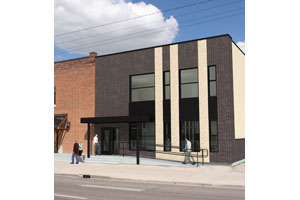
“Having an effective and dignified infrastructure to prepare the deceased for burial and to support mourners is something a strong community does for itself.
“The funds raised will be used to: demolish the existing south building; build the new structure; protect the north building during demolition and construction; and furnish the new building with new equipment. The vision is of a building that is handsome, durable, and comforting and that includes state-of-the-art equipment for the care of the deceased. “The new 4,000-square-foot building will include the following features:
“A new, larger tahara room with stainless steel counters and more room for volunteers to perform their work safely (“tahara” is the ritual washing and dressing of a Jewish person in preparation for burial);
“new, state-of-the-art refrigeration units;
“new mechanical lifts for transferring bodies more safely;
“enhanced safety features to improve the experience of volunteers and ensure the dignity of the deceased;
“expanded storage space for caskets, shrouds, and supplies;
“an elevator for guests and volunteers with mobility issues;
“wheelchair access to the building;
“private meeting spaces for mourners, extended family, and friends to gather (currently, mourners use the boardroom);
“more comfortable accommodations for shomrim (“shomrim” are guards who watch over the deceased, so that they are never alone);
“a safer, more accessible back staircase and entrance way;
“enhanced washroom facilities;
“refurbished office space;
“state-of-the-art heating and cooling systems; and other features to create better conditions for mourners, staff, and volunteers, and to ensure the dignity of the deceased.”
The capital campaign is still ongoing – although it has taken a pause during this unprecedented time of global emergency. This past week I spoke with Rena Boroditsky and with Bob Freedman, former CEO of the Jewish Federation, and now a fundraising consultant to Jewish organizations.
During our phone conversation we talked about how the capital campaign has gone. As well, we talked about the history of the Chesed Shel Emes. Following are some excerpts from our conversation:
Bob began the conversation by noting that the “Chesed didn’t come into existence as an organization until 1930 when they bought the house. Up until 1930 when someone passed away they would be prepared in the Jewish tradition – in someone’s home.
“Come 1930 they had a building where the bodies of the deceased would be prepared – up until a few months ago when that operation was moved over to Chapel Lawn” Funeral Home.
As far as the move to Chapel Lawn goes, Rena had this to say: “They have a new 25,000 square foot funeral home that they built on their property, so we have a dedicated room; we are not sharing their prep room. That’s where we are doing tahara; our supplies are kept there.
“We have a dedicated office space, where the shomer sits.”
I asked how the capital campaign has gone to date?
Bob said: “The capital campaign has raised $2.8 million – that’s pretty darn good. Remember, in a capital campaign donors may honour their pledges over a number of years; this campaign has had about half the pledges paid in full, so we have the money to begin the project now.
“By the way, we’ve successfully connected with about 400 donors that have already concluded pledges and there are hundreds more that we haven’t even connected with. This is very much a community organization that serves every aspect of the community and we want everyone in the community to participate at whatever level they’re able to. We’re probably going to extend the campaign because of different circumstances, including COVID-19. We probably would have been more active in the past month or two, but for obvious reasons, took a pause – and so, ending the campaign around the end of May or June, it’s more realistic now to end it around the end of 2020.”
I asked how many individual donors there have been?
Rena answered: “I’d say about 400 (including families).”
I said: “That means the average donation works out to about $7,000.”
Bob noted though that “But, we’ve had donations of $18 and we’ve had a donation of $500,000 – so it varies. Unlike other capital campaigns we’ve had (like the Campus), there are no dedication opportunities.”
Rena added: “Donors will be recognized on a donor wall in the new building.”
Bob: “By the way, Bernie, do you know when was the last time the Chesed ran a dedicated campaign in the community? 1945. That was to raise money for the chapel, which opened in November 1947.
“The Chesed does have charitable status and people have given money, but has the Chesed gone out and raised money? No.
“When we got started on the project we had to develop a donor database because, except for those people who have given money from time to time, the donor base primarily consists of people who are now deceased.”
I asked whether, once the building is done, people “are going to be able to walk through and see where the money has gone?”
Rena: “We will still have a shomer space for families. I’ve been giving tours of the house for the past 20 years – and I’ll still be doing that.
“It’s going to be a two-storey building. It’s going to be a little narrower than what we currently have but a little bit longer from the front to the back…We expect to have it done in about a year.”
Bob: “With COVID-19 there’s certainly been a slowdown in construction activity in the city. We retained Akman Construction as a general contractor. We’re pretty satisfied that the numbers (from the various sub trades) that came in are pretty good.”
I noted the Chesed has to keep going – no matter what the situation.
Rena said: “The Chesed Shel Emes never closes. We had 17 people pass away in April.”
I asked: “How has it been going to Chapel Lawn? Has it been a fairly smooth transition?”
Rena: “We haven’t been down even one day. We had a tahara the day after we moved. It’s been a bit of a learning curve. Their staff is amazing; they are so accommodating. It’s spotless there. They’ve been wonderful.
“That being said, we are not in our own space; there’s some accommodation that needs to be made – just in the way we do things, so we will be happy to get back to our own space – but it’s been a very smooth transition.”
We talked about the effect that COVID-19 has had on synagogues here when it comes to arranging funerals. Rena observed that funerals are limited to the pallbearers and the grave diggers now. As well, there are no meals of consolation, she pointed out.
Still, I wondered whether the relatively large number of funerals in April might have led to a fairly significant infusion of money into the synagogues.
Rena pointed out that the likelihood was that many of those funerals had been prepaid, so that wouldn’t have added to the synagogue’s cash flows. “They may be busy but that doesn’t mean they have any cash flow,” she observed.
Bob said: “We’d like to raise between $400-500,000 more. We’re confident we’ll do it, although we’re quite aware the current situation is not the best of times for many donors. In May and June we’re going to reconnect with people that have already been spoken to and, if we can conclude some of those pledges earlier rather than later, we’ll try to conclude everything by the end of the year. Because of the Federation’s emergency campaign we’re not going to connect with people who have not been spoken to yet.”
Rena: “Anything we might collect over and above what we need for the building will go into our endowment fund, which we established at the Jewish Foundation.”
At this point Bob Freedman interjected an interesting bit of history:
Bob: “Bernie, have you seen the safe? It must weigh 500 pounds.”
“So, what’s in the safe?” I asked.
“Not cash, unfortunately. When I first opened the doors, I opened a bunch of little books. People who passed away were recorded – by pencil or pen, by name – their Hebrew name, the date they died. So I looked up my mum, I looked up my dad. It’s really a history of the Jewish community. There was a big picture of the machers from the 1930s – all men, of course. There was a big picture of the ladies’ auxiliary – all looking very stern.
“By the way, if those men knew that the place was being run by a woman, they’d all be spinning in their graves.
“When you ask someone how do you define a Jewish community, as opposed to a community with Jews living in it, there are three things: A shul, a school, and a chevra kadisha – a burial society.
“Burial is one of the first things people thought about when they came from the old country. They looked for a place to bury people.”
Rena: “Chesed Shel Emes Inc. was formalized in 1930, when they purchased the house. Before that they may have called it chevra kadisha. My information came from Mr. (Ike) Permut, of blessed memory (who was President of the Chesed board in the 70s, 80s, and half the 90s).
Bob “And the original bylaws were written in Yiddish”
One final note: If you would like to make a contribution to the Chesed Shel Emes capital campaign, go to www.ourtradition.ca
Local News
Canadian produced kosher wine now available in Winnipeg

By BERNIE BELLAN With the imposition last February of a ban on the sale of American liquor in Manitoba, the only type of kosher wines that were available here were from Israel, specifically wines produced by the Galil winery.
Since the latter part of September, however, kosher wines produced by a Canadian winery are now available in Manitoba liquor marts, also the Kenaston Wine Market.
The wines – a red and a white, are produced by a winery known as Tzafona Cellars – located in the Niagara region of Ontario.
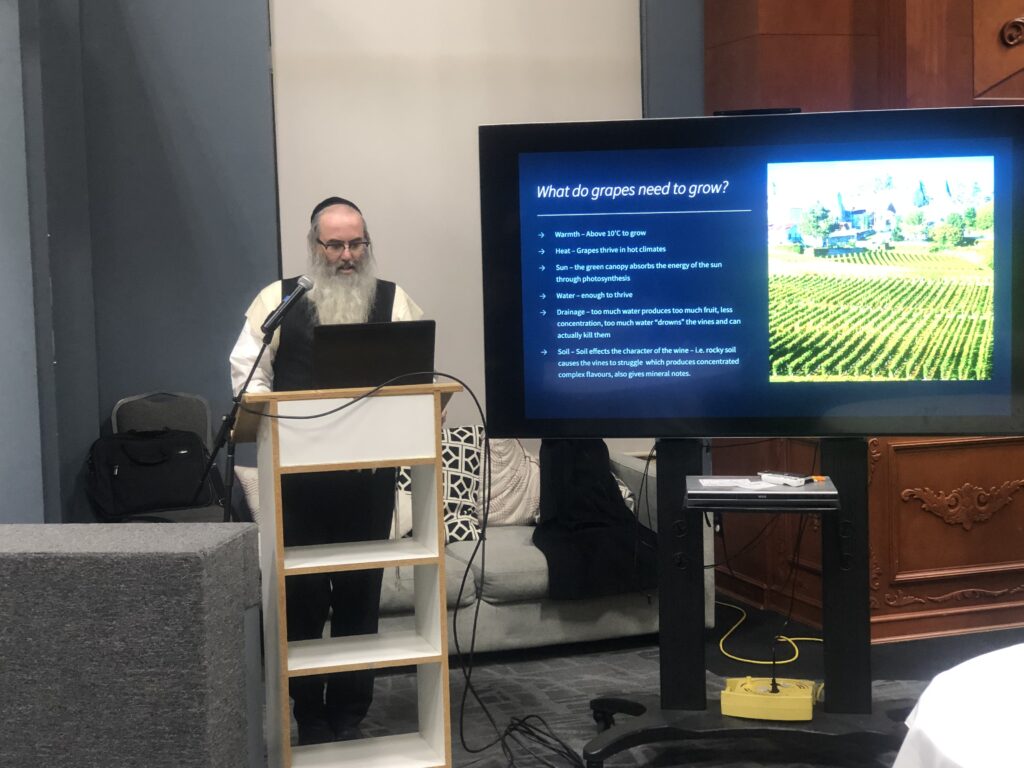
On Tuesday, December 2, Rabbi Avraham Gislason, who is a a rabbi in Thornhill, as well as a Tzafona Cellars winemaker, spoke to a large crowd at the Jewish Learning Centre, where he not only explained how kosher wine differs from non-kosher wine, he brought along bottles of five different wines produced by Tzafona Cellars for members of the audience to taste.
So – what makes a wine kosher? you might ask. According to the internet, “A wine is kosher if it is made according to Jewish dietary laws… with strict supervision and handling by Sabbath-observant Jews from the crushing of the grapes to the bottling of the finished product. The winemaking process must use only kosher-certified ingredients, such as yeast and fining agents, and rabbinically-approved equipment.
Rabbi Gislason himself started Tzafona Cellars in 2014. According to the Tzafona website, Rabbi Gislason saw that the “soil, air, and microclimate of the Niagara Peninsula all come together to create an up-and-coming world class wine region, yielding a unique experience that cannot be recreated anywhere else in the world.”
While he appreciated the quality of the wines being produced in the Niagara region, there was one problem: None of the wines were kosher.
According to the Tzafona website, “Starting with the 2014 vintage, Tzafona began to produce kosher wines using the same techniques and high-quality grapes used in producing other premium non-kosher wines. Since then, Tzafona has continued to produce a variety of different wines, namely Cabernet Sauvignon, Riesling, and Chardonnay. We have produced award-winning Icewines in the Vidal, Riesling, and Gewurtzraminer varietals. Tzafona is the only kosher Icewine producer in North America. Their Cabernet Franc Icewine won a Gold Medal at the All Canadian Wine Championships in 2025.
In 2016 we began to produce a line of refreshing semi-sweet wines under our brand “Nava Blanc” and “Nava Ruby.” (It is the Nava Blanc and Nava Ruby wines that are now available in Manitoba). Both of these wines are Tzafona’s bestsellers here in Canada and the USA.
The process of getting Tzafona wines approved in Manitoba was set in motion by Winnipeg marketing specialist Marsha Friedman, who for many years has worked as a marketing consultant and sales agent for businesses looking to offer premium kosher foods to their customers.
Her business, Excellence & Kosher, focuses on identifying unmet needs in the market. “I see a need and I try to fill it,” Marsha says.
“We also ensure that the most needed Kosher food products for the stores that carry Kosher are available, including Canadian Kosher wine,” she adds.
Marsha explains that she approached Tzafona—the only truly Canadian kosher wine company—some time ago with the idea of opening the Manitoba market for them and introducing their wines to local consumers.
Afterward, she contacted tManitoba Liquor and Lotteries (MBLL), which agreed to begin carrying two Tzafona wines: Nava Ruby (Red) and Nava Blanc (White).
Since that initial success in making Tzafona wines available for purchase in Manitoba, Marsha says that she and her daughter Shira have been making similar progress in Alberta and hope to expand into the British Columbia market as well.
For more information about Tzafona Wines, including the addresses of stores in Winnipeg and throughout Manitoba that carry their products, please visit the MBLL Liquor Marts website:
https://www.liquormarts.ca/liquormarts
Go to “Find a Product” and type “Tzafona.” Both wines will appear. Select the wine you’re interested in, then click “Store Inventory.” A list of all MBLL Liquor Marts that carry that product will be displayed.
Marsha adds that “We are hoping to have more listings of Tzafona wines available for Pesach this year, and we will be presenting them to MBLL for their approval.
“L’Chaim!”
Local News
Thanks to a Grant from the Asper Foundation the Gwen Secter Centre will Soon Begin Offering Free Kosher Shabbat Meals to Jewish Seniors
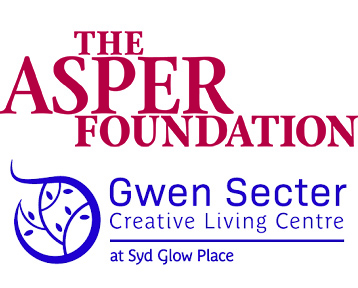
By BERNIE BELLAN In these increasingly difficult times – when so many families are finding it difficult to make ends meet, one group in society in particular is being hard hit by escalating food prices: seniors.
As food prices continue to rise, many seniors are struggling to afford many food items that they had always enjoyed previously. And, when it comes to Jewish seniors who might want to continue to remain kosher, the struggle is even more difficult – as the price of kosher meat and chicken has gone up even faster than the price of nonkosher meat and chicken.
Now, in an attempt to provide a modicum of comfort to some of those Jewish seniors, the Gwen Secter Centre, with support from the Asper Foundation, is about to begin providing kosher Shabbat meals for up to 50 Jewish seniors on a weekly basis.
Here is how Becky Chisick, executive director of the Gwen Secter Centre, describes what is going to be called the “Mitzvah Meal Program” will work: “We will be launching a new food security program supported by The Asper Foundation. Food security is a going concern is our community, especially with seniors living on a fixed income. The Mitzvah Meal program will ensure no one in the Jewish community is unable to celebrate Shabbat and other important Jewish holidays throughout the year. This program will transform the lives of so many seniors.
“Gwen Secter Creative Living Centre will be working closely with Jewish Child and Family Services to identify those who qualify for the program. There are many seniors that are not able to access Kosher Meals on Wheels (which is already a subsidized program thanks to the Jewish Federation), due to financial restrictions. The Mitzvah Meal Program, Supported by The Asper Foundation, has different criteria than the Kosher Meals on Wheels program.
“During the pandemic, we quickly realized how many seniors were not able to celebrate Shabbat due to lack of resources and finances. The Mitzvah Meal program will provide up to 50 individual low-income seniors with a healthy and fresh Shabbat (meat) meal, including chicken soup, challah bun, full entree of chicken, starch and vegetables, and dessert. In addition, they will receive special holiday foods and tools, so everyone is able to celebrate Shabbat and other Jewish holidays. For example: latkes and sufganiyot for Chanukkah, hamantaschen for Purim, etc. Those that are able to light candles at their residence will also get Shabbat and Chanukkah candles.”
Becky added, however, that “We still require close to $10,000 to ensure we can accommodate the max for a year and I plan to apply to The Jewish Foundation for the support.”
We contacted Anita Wortzman, president of the Asper Foundation, to ask her how the Asper Foundation became involved in this program. Anita responded: “The Asper Foundation is thrilled to support Gwen Secter Creative Living Centre and their new Mitzvah Meal Program. We believe that seniors in our community should be treated with the dignity, comfort and connection that Shabbat and the Jewish holidays bring. The long-term work of Gwen Secter Living Centre in delivering kosher meals on wheels, makes this a wonderful extension of that service to the Jewish community.”
As to how recipients of the “Mitzvah Meals” are chosen, we received this response from Alexis Wenzowski, Chief Operating Officer of JCFS: “Our priority will be ensuring that low-income seniors, those experiencing social isolation, and those facing mobility or transportation challenges are referred into the Gwen Secter program in a timely and effective manner.
“We have shared information about the Gwen Secter Food Security for Seniors Program across our Mental Health and Addictions, Settlement and Integration, and Older Adult Services teams. These program areas collectively serve some of the most marginalized and isolated seniors in our community, many of whom face complex barriers to accessing nutritious kosher food. We foresee there to be many referrals from these JCFS (programs into the Gwen Secter initiative. We are grateful and excited there will now be a formalized cooked meal Shabbat program for food insecure seniors.”
Alexis added this note about the number of individuals within our Jewish community who seek assistance from JCFS as a result of financial pressures: “JCFS is keenly aware that financial stressors and the cost-of-living crisis is impacting everyone. Food insecurity continues to be a significant and growing concern across our community, as it is in all communities. In the past year alone, our Asper Empowerment Program supported 179 unique households, with 7,542 kg of food security supports. An additional 122 households received employment and financial supports — including interest-free loans, grants, gift cards, and budgeting guidance — underscoring the breadth of need we are seeing. People are struggling.”
As noted, however, while Becky Chisick stated that the Asper Foundation funding will help to get the program going, the Jewish Foundation is being approached to provide additional funding in order to guarantee that the program can continue for at least one year. In the meantime though, if you would be interested in making a donation to help fund the program, Becky encourages you to make your contribution to the Gwen Secter Centre, stipulating that you want the money to go to the Mitzvah Meal Program.
One more note: While there are already some volunteer drivers in place once the program begins, more are still needed. To volunteer as a driver, contact Vanessa Ordiz at the Gwen Secter Centre: vanessa@gwensecter.com or phone 204-339-1701. Volunteers will be provided quarterly tax receipts for their service.
At the same time, by volunteering as a driver, it will allow for meaningful connections between clients and volunteers. For many clients this may be the only person they connect with that day.
Local News
Community leader Sheldon Zamick role model of perseverance despite life’s vicissitudes
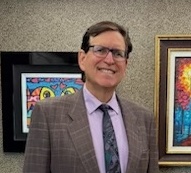
By MYRON LOVE For Sheldon Zamick, life is a marathon, not a sprint – and there is always more to learn. In a life marked by struggles, he has overcome adversity and written a story of success both in business and community leadership.
Over the years, he has given of his time and experience to a great variety of charitable organization – including the Jewish Federation, the CJA, the JNF, Canadian Associates of Ben-Gurion University of the Negev, the Canadian Magen David Adom, the Shaarey Zedek Synagogue (he is currently the Board’s finance chair), the Canadian Museum for Human Rights, Mount Carmel Clinic, the Variety Club, Muscular Dystrophy, Habitat for Humanity, Siloam Mission, and the Canadian Institute for the Blind. The most recent charitable organization that has benefited from his leadership has been the Lake Winnipeg Research Consortium.
He took on his most recent challenge as executive director of the Lake Winnipeg Research Consortium last year after stepping away from a 40-year career in real estate sales. “This is a really big responsibility,” he says of taking the helm of the LWRC.
As noted on the LWRC webpage, the organization was founded in 1998 “to facilitate scientific research on Lake Winnipeg following evidence of water quality deterioration related to the 1997 Red River ‘Flood of the Century’. The LWRC was incorporated in Manitoba in 2001 and received charitable status in 2008”.
“Our organization does vital research in regard to Lake Winnipeg,” Zamick points out. “Our 328-ton, 110-foot-long ship, the MV Namao – which celebrated its 50th birthday this past August (during which over 1200 supporters toured the boat) in Gimli – is out regularly in the spring, summer and fall on Lake Winnipeg taking water samples. We provide the research platform for scientists to conduct research with regard to climate change and the state of the lake and fish population. We offer science education year round, group tours and summer camp programs for kids.”
He adds that the consortium works closely with many stakeholders, including the Universities of Manitoba and Winnipeg, and receives funding from the Winnipeg Foundation, the Canada Water Agency, Manitoba Hydro, the Manitoba Government, the City of Winnipeg, the town of Gimli, other municipalities and many individual donors.
“It has been great getting the opportunity to meet with various government officials, research partners and donors,” he says.
Sheldon Zamick is a role model demonstrating that an individual growing up in humble surroundings and having to deal with adverse circumstances can succeed in life. He recalls how he had to go to work early in life – at the age of 12 – to help support his family. “We moved around a lot when I was growing up in the North End because my parents could never afford to buy their own home,” he recounts. “That is what drew me to a career in real estate.”
His first job, he says, was peeling potatoes in the basement at Kelekis (a long gone North End Winnipeg restaurant which those of us of a certain age still fondly remember). “I had to learn at an early age to be self-sufficient,” he notes.
In his university days, he worked part time as a corrrections officer – taking as many shifts he could get – at the Winnipeg Remand Centre.
He also demonstrated his leadership capacity at an early age. At 17, he served as president of the USY chapter at the former Rosh Pina Synagogue (even though his parents couldn’t afford to be members of the shul).
After graduating from the University of Manitoba with degrees in Economics and Psychology, he founded TV Facts Magazine, a free weekly TV and shopping guide which some readers may remember. “TV Facts was part of an international chain of publications,” he recounts. “I had to travel to New York to learn how to run a magazine. At our peak, we were putting out 50,000 copies a week – which were available in over 500 locations.”
It was in 1985 that Zamick pursued his interest in becoming a realtor – a profession in which he excelled. Over 40 years as a realtor, he received numerous sales awards, also recognition for his leadership role in his profession and his numerous contributions to the wider community. In the former field, he served for five years as a member of the Winnipeg Real Estate Board, including a term as treasurer and chairing the Government Relations committee.
In 2013-14, he was elected as a director of the 120,000-member Canadian Real Estate Association.
Zamick was recruited into volunteering in the Jewish community, he notes, in the mid-1980s by Laurie Goldberg and the late Larry Rosenberg, who were co-chairs of the Federation’s Young Adult Division. Sheldon subsequently served as co-chair –with Sid Halpern – of the 1987-88 Combined Jewish Appeal’s New Gifts Division.
“We were responsible for contacting members of the community who hadn’t given for a long time,” he explains. “We were really successful in persuading many of them to contribute to the campaign and (by extension) the community.”
That year, he and current outgoing Federation president Paula Parks were nominated to receive our community’s Young Leadership award. Zamick was presented with the Harry Silverberg Young Leader of Distinction Award by Nora Kaufman, the late Harry Silverberg’s daughter.
He later served as the CJA’s campaign director from 1989 to 1992. “During the 1989-90 campaign – that included Operation Exodus (aimed to help Jews leave the dying Soviet Union) – we raised an extra $2 million- bringing in a total of $6-million that year.”
In 1992, Zamick was afflicted with a condition that might have derailed a lesser individual. He was diagnosed with Retinitis Pigmentosa, a condition that left him legally blind. The ever resilient Zamick however took the diagnosis in stride. In 2022, he told an online publication called “Slideshare” that, after the diagnosis, he chose to be thankful for what he had rather than focus on what he had lost.
He added that while legally blind, he still has some sight in certain lighting. “It is a unique way to live,” he told Slideshare, “but you have to adapt to it and I haven’t let it stop me.”
He has been helped immensely by his longtime, supportive wife, Florence.
Typically, following his diagnosis, he threw himself into volunteering with the Canadian National Institute of the Blind. He served on the board of the CNIB for 16 years and was a leader in raising the funds one year – when the CNIB was facing government cutbacks.
Zamick is planning to retire from his current position at the end of this month. He says that he and Florence are looking forward to spending more time with family and friends, travelling –a pasttime they both enjoy, and getting together with their children – Natalie in Toronto and Steven and his wife Ally, along with granddaughters Isabella and Mikayla in Montreal.
He is however, still open to new possibilities. “You never know who might call next,” he observes.


